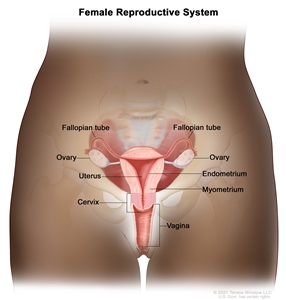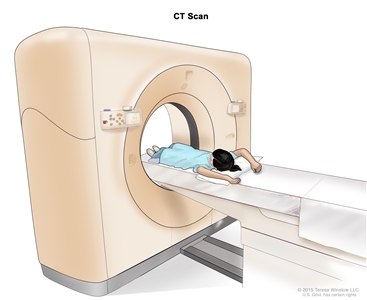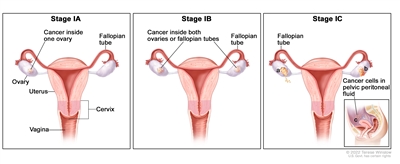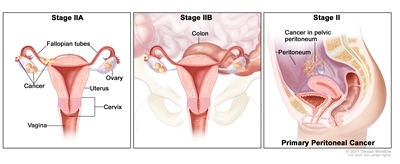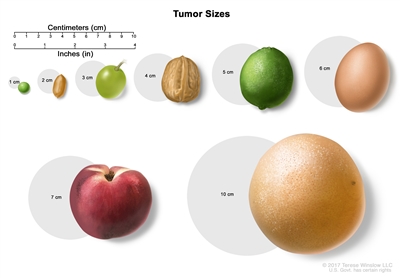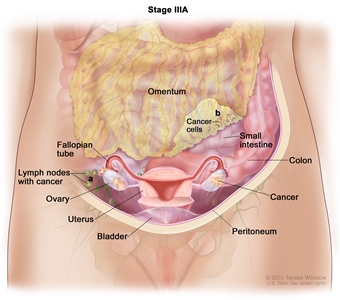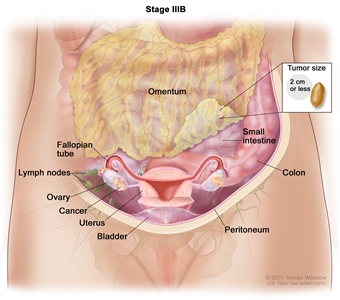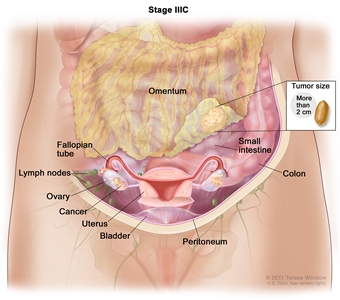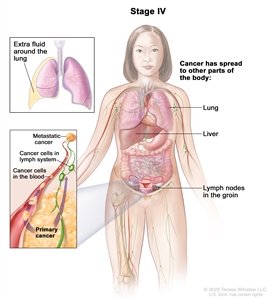Types of treatment for childhood ovarian cancer
Who treats children with ovarian cancer?
A pediatric oncologist, a doctor who specializes in treating children with cancer, oversees treatment for childhood ovarian cancer. The pediatric oncologist works with other health care providers who are experts in treating children with cancer and who specialize in certain areas of medicine. Other specialists may include:
- pediatrician
- pediatric surgeon
- gynecologist
- pathologist
- pediatric nurse specialist
- rehabilitation specialist
- social worker
- psychologist
- fertility specialist
There are different types of treatment for children and adolescents with ovarian tumors. You and your child's cancer care team will work together to decide treatment. Many factors will be considered, such as your child's overall health, whether the tumor is benign or cancerous, and whether the tumor is newly diagnosed or has come back.
Your child's treatment plan will include information about the cancer, the goals of treatment, treatment options, and the possible side effects. It will be helpful to talk with your child's cancer care team before treatment begins about what to expect. For help every step of the way, see our booklet, Children with Cancer: A Guide for Parents.
The types of treatment your child might have include:
Surgery
Surgery is used to remove a tumor in the ovary. Sometimes the ovary and/or fallopian tube are also removed. During surgery to remove the tumor, fluid in the abdomen will be checked for signs of cancer.
Chemotherapy
Chemotherapy (also called chemo) uses drugs to stop the growth of cancer cells. Chemotherapy either kills the cancer cells or stops them from dividing.
Chemotherapy may be given in different ways. For ovarian cancer, chemotherapy is injected into a vein. When given this way, the drugs enter the bloodstream and can affect cancer cells throughout the body. Chemotherapy drugs used alone or in combination to treat ovarian cancer in children include:
- bleomycin
- carboplatin
- cisplatin
- cyclophosphamide
- etoposide
- ifosfamide
- vinblastine
Other chemotherapy drugs not listed here may also be used.
Learn more about how chemotherapy works, how it is given, common side effects, and more at Chemotherapy to Treat Cancer.
Stem cell transplant
High doses of chemotherapy are given to kill cancer cells. This cancer treatment destroys healthy cells, including blood-forming cells. Stem cell transplant (also called stem cell rescue) is a treatment to replace the blood-forming cells. Stem cells (immature blood cells) are removed from the blood or bone marrow of the patient and are frozen and stored. After the patient completes chemotherapy, the stored stem cells are thawed and given back to the patient through an infusion. These reinfused stem cells grow into (and restore) the body's blood cells.
Targeted therapy
Targeted therapy uses drugs or other substances to block the action of specific enzymes, proteins, or other molecules involved in the growth and spread of cancer cells.
Tazemetostat is used to treat ovarian cancer.
Learn more about Targeted Therapy to Treat Cancer.
Clinical trials
For some children, joining a clinical trial may be an option. There are different types of clinical trials for childhood cancer. For example, a treatment trial tests new treatments or new ways of using current treatments. Supportive care and palliative care trials look at ways to improve quality of life, especially for those who have side effects from cancer and its treatment.
You can use the clinical trial search to find NCI-supported cancer clinical trials accepting participants. The search allows you to filter trials based on the type of cancer, your child's age, and where the trials are being done. Clinical trials supported by other organizations can be found on the ClinicalTrials.gov website.
Learn more about clinical trials, including how to find and join one, at Clinical Trials Information for Patients and Caregivers.
Treatment of benign childhood ovarian tumors
Treatment of newly diagnosed benign ovarian tumors in children may include surgery.
Treatment of childhood ovarian epithelial cancer
Treatment of newly diagnosed ovarian epithelial cancer in children may include:
Treatment of childhood ovarian stromal tumors
Treatment of newly diagnosed ovarian stromal tumors, including juvenile granulosa cell tumors and Sertoli-Leydig cell tumors, in children may include:
- surgery to remove one ovary and one fallopian tube for early cancer
- surgery followed by chemotherapy for advanced cancer
- chemotherapy for cancer that has recurred (come back)
Treatment of childhood small cell carcinoma of the ovary
Treatment of newly diagnosed small cell carcinoma of the ovary in children may include:
- surgery followed by chemotherapy and high-dose chemotherapy with stem cell rescue
- targeted therapy (tazemetostat)
Treatment of recurrent ovarian cancer
If the cancer comes back after treatment, your child's doctor will talk with you about what to expect and possible next steps. There might be treatment options that may shrink the cancer or control its growth. If there are no treatment options, your child can receive care to control symptoms from cancer so they can be as comfortable as possible.
